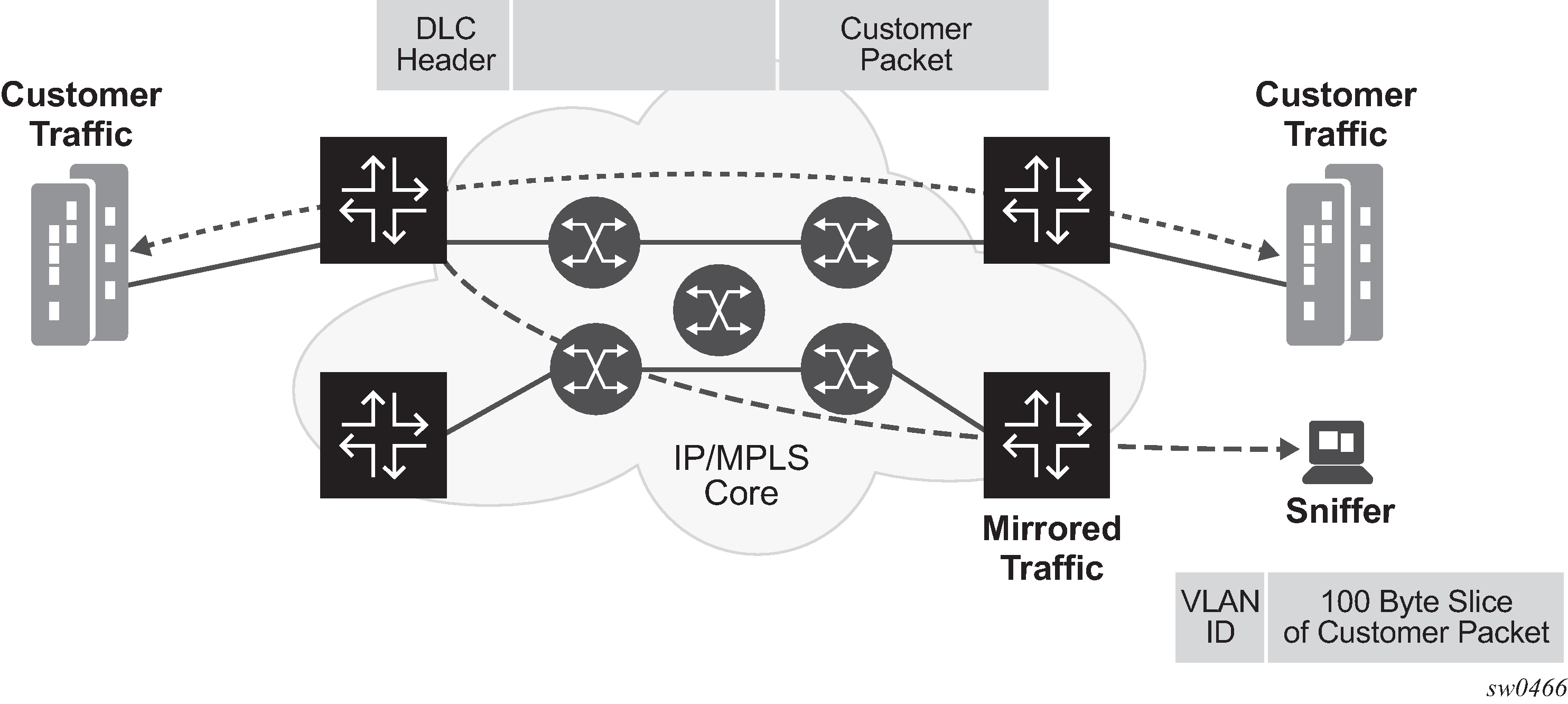When troubleshooting complex operational problems, customer packets can be examined as they traverse the network. Nokia’s service mirroring provides the capability to mirror customer packets to allow for trouble shooting and offline analysis.
This capability also extends beyond troubleshooting services. Telephone companies have the ability to obtain itemized calling records and wire-taps where legally required by investigating authorities. The process can be very complex and costly to carry out on data networks. Service Mirroring greatly simplifies these tasks, as well as reduces costs through centralization of analysis tools and skilled technicians.
Original packets are forwarded while a copy is sent out the mirrored port to the mirroring (destination) port. Service mirroring allows an operator to see the actual traffic on a customer’s service with a sniffer sitting in a central location. In many cases, this reduces the need for a separate, costly overlay sniffer network.
7210 SAS devices configured in access-uplink mode support only local mirroring.
When using local mirroring user has an option to use NULL SAP or a dot1q SAP or a Q1.* SAP as mirror destination. Use of Dot1q SAP or a Q1.* SAP as the mirror destination allows the mirrored traffic to share the same uplink as the service traffic (when the uplinks are L2 based).
On some 7210 SAS platforms, when using Dot1q SAP or a Q1.* SAP or MPLS SDP as the mirror destination user needs to dedicate the resources of a port for use with mirror application (see below for more details).
The following figure shows an example of service mirroring.
